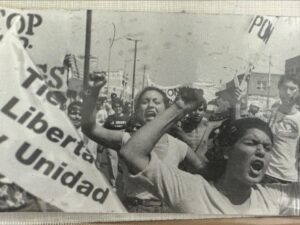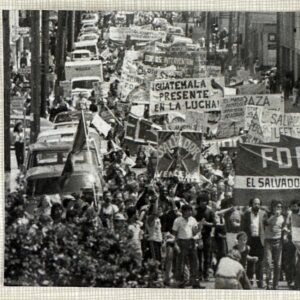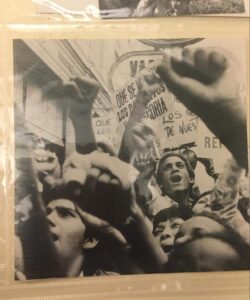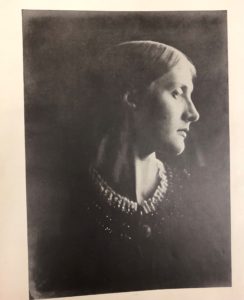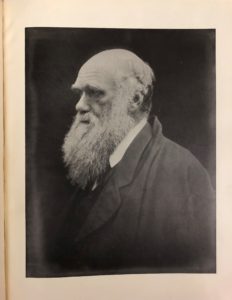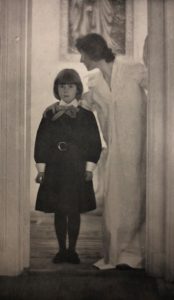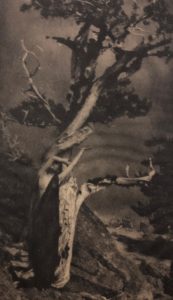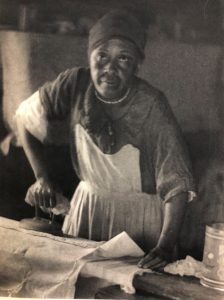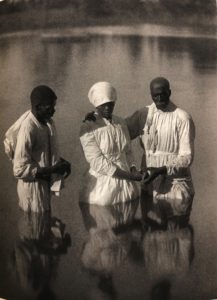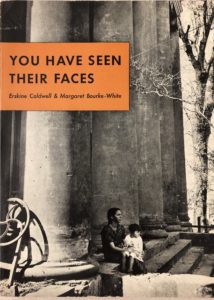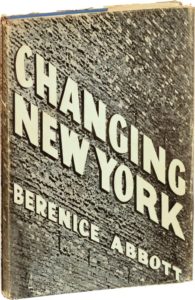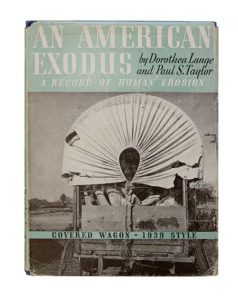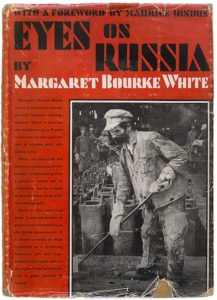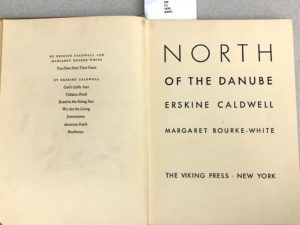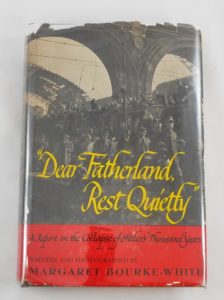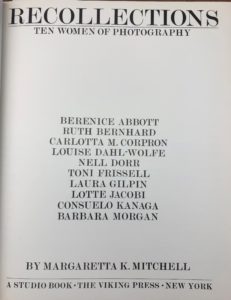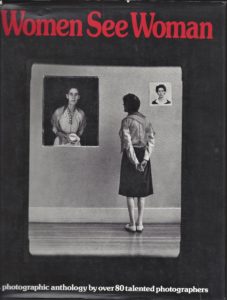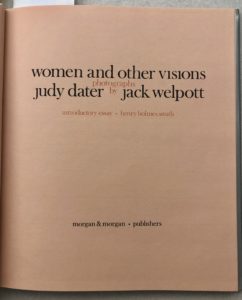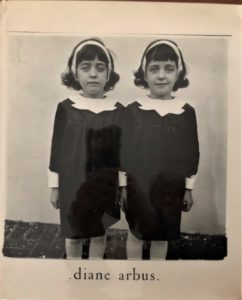Author: James Eason
A Californiana Returns to the Bay Area: Ana María de la Guerra de Robinson
Women’s history month is the perfect time to announce an exciting addition to Bancroft Library’s collection of daguerreotype portraits. At the end of 2023 the library was able to acquire a beautiful 1850s portrait of a Californiana: doña Ana María de la Guerra de Robinson, also known as Anita.
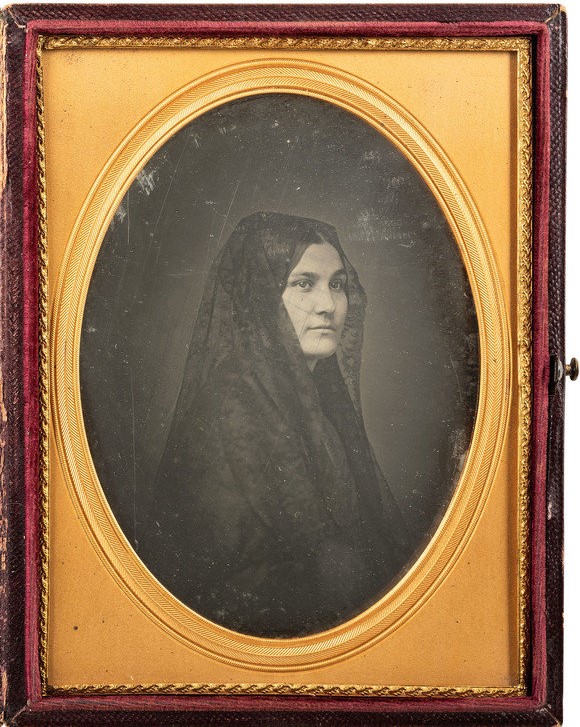
In this large (half plate format) daguerreotype of about 1850-1855, Anita wears a lace mantilla, in the Spanish fashion. A beautiful large daguerreotype like this was an extravagance at the time, and the portrait is all the more evocative because Anita, tragically, died within a few years of its creation.
Fortunately, quite a bit is known about her life. Anita was born into the prominent de la Guerra family of Santa Barbara in 1821 -– the same year the Spanish colonial period ended and control by an independent Mexico began. She was married at age 14, to an American trader and businessman named Alfred Robinson, 14 years her senior. This wedding is described in Richard Henry Dana’s Two Years Before the Mast, so we have an unusually detailed account of what was a grand occasion.
She and her husband snuck away from her family in 1838, leaving their baby daughter behind with her grandparents. Anita, age 15, wrote ”We have left the house like criminals and left here those who have possession of our hearts.” Various writers have interpreted these circumstances differently but, whatever the reason for this strange departure, Anita spent the next 15 years in Boston and the East Coast, seemingly eager to return home, but continually disappointed in the hope. It is hard to imagine that her life was entirely happy, in spite of the steady growth of her family and the prosperity and social prominence the Robinsons and de la Guerras enjoyed.
Having borne seven children, and having witnessed from afar (and apparently mourned) the transition of her homeland from Mexican territory to American statehood, Anita finally returned to California in the summer of 1852. It is likely she had her daguerreotype portrait taken at this time, in San Francisco, although it could have been taken back east. Sadly, she lived just three more years in California, dying in Los Angeles in November 1855, a few weeks after giving birth to a son. She is buried at Mission Santa Barbara.
A study of Anita’s life was published by Michele Brewster in the Southern California Quarterly in 2020 (v.102 no. 2, pg. 101-42) . Read more of her story!
With such a fascinating and relatively well-documented life, we’re thrilled to have Anita’s beautiful portrait here at Bancroft. It joins other de la Guerra family portraits, as well as numerous papers related to the family, including “Documentos para la historia de California” (BANC MSS C-B 59-65) by her father, José de la Guerra y Noriega.
Two of Anita’s sisters had “testimonias” recorded by H.H. Bancroft and his staff; one from Doña Teresa de la Guerra de Hartnell (BANC MSS C-E 67) and another from Angustias de la Guerra de Ord (BANC MSS C-D 134).
Anita’s daguerreotype itself presents an interesting conundrum and history. The photographer is unknown, as is common with daguerreotypes. The portrait has been known over the years because later copies exist in several historical collections, including the California Historical Society, the Massachusetts Historical Society, and Bancroft Library’s own Portrait File.
The daguerreotype acquired last Fall was owned for some decades by a collector. When he acquired it, it was unidentified. Later he encountered a reproduction of it in a historical publication, and thus had the identification of the sitter. Each of the known copies is somewhat different from the others. In her article, Brewster reproduces the copy from the Massachusetts Historical Society. It is a paper print on a carte de visite mount bearing the imprint of San Francisco photographer William Shew, at 115 Kearny Street.
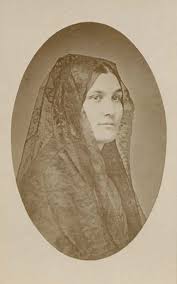
Based on this information, Brewster attributed the portrait to Shew; however, Shew is merely the copy photographer. A daguerreotype, largely out of use by the 1860s, is a unique original, not printed from a negative, so only one exists unless it is copied by camera. The carte de visite format was not in widespread use until the 1860s, and Shew was not at the Kearny address until the 1872-1879 period. So the photographer remains unidentified.
Another puzzle is posed by the early 20th century reproductions in the Bancroft Portrait File and the California Historical Society, which appear identical. These copies present a less closely cropped pose than the original daguerreotype, which is perplexing! Anita’s lap and hands are visible in the copies, but not in the daguerreotype. Although the bottom of the daguerreotype plate is obscured by its brass mat, there is not enough room at the lower edge to include these details.
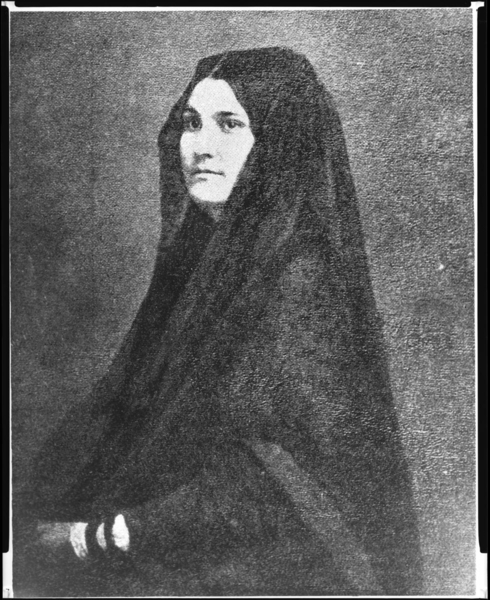
How could a copy contain more image area than the original? Upon reflection, two possibilities come to mind:
1) the daguerreotype was copied in the 19th century and photographically enlarged, then re-touched or painted over to yield a larger portrait that included her lap and hand, added by an artist. This reproduction was later photographed to produce the copies in the Portrait File and CHS.
or,
2) the original daguerreotype included her lap and hand, and it was re-daguerreotyped for family members in the 1850s, perhaps near the time of Anita’s 1855 death. When the copy daguerreotypes were made, they were composed more tightly in on the sitter, omitting the lap and hands. The newly acquired Bancroft daguerreotype could be a copy of a still earlier plate – and this earlier plate could be the source of the later paper copy in the Portrait file.
This will likely remain a mystery until other variants of this portrait surface. Are there other versions of this portrait of Anita de la Guerra de Robinson to be revealed?
Reference
Brewster, Michele M. “A Californiana in Two Worlds: Anita de La Guerra Robinson, 1821–1855.” Southern California Quarterly 102, no. 2 (2020): 101–42. https://www.jstor.org/stable/27085996.
50 Years in San Francisco’s Mission District: The Archives of Acción Latina
Photographic prints and posters from the archives of Acción Latina and El Tecolote newspaper are now available for research at Bancroft Library, with an online finding aid newly published at the Online Archive of California. This is the result of the dedicated work of Isabel Breskin, an intern in Library and Information Science at the University of Washington. Below we have Isabel’s reflections on the collection, along with snapshots of a few photographs encountered while she arranged and described the files. Organizational records and other materials from Acción Latina will be made available in the coming months. -JAE
A Guest Posting by Isabel Breskin
Acción Latina is a community organization based in San Francisco’s Mission District. The roots of the organization’s work go back to 1970, when San Francisco State University journalism professor Juan Gonzalez launched a newspaper with his students. That newspaper, El Tecolote, is still published bimonthly and is now the longest-running bilingual newspaper in the country. In 1982, volunteers from El Tecolote and New College of California staged the first Encuentro del Canto Popular, a festival celebrating Latin American music. The festival became an annual event; the 41st Encuentro was held in December 2022.
The Acción Latina and El Tecolote Pictorial Archive contains thousands of photographs, hundreds of posters and artists’ prints, as well as negatives, slides, cartoons and other drawings, and digital images. The photographic print collection and the poster and artists’ print collection are now available to researchers.
The photographs capture all aspects of life in the Mission beginning around 1970 and continuing into the first decade of the 21st century, as people took to the streets to protest and celebrate, as they went to work and school, played music and danced, painted murals and listened to poetry. I found the photographs of protests particularly compelling — and I think researchers will, too. They are both rich in information about the issues and causes of the times, and moving evidence of the passion and belief that stirred people to action.
Here are just a few snapshots I took as I worked to arrange and rehouse the photographs.
As I’ve been working on the collection I’ve been thinking about all the people involved: the many people who have been part of Acción Latina over the decades, who have lived and worked in the Mission District and have contributed to the vibrancy of its community, the photographers and artists who created these materials, and the people who will now turn to the images and learn from them.
We recently had our first researcher come to use the newly available collection. He was interested in Bay Area events related to the politics and culture of Chile. Among the relevant images in the collection is this photograph.
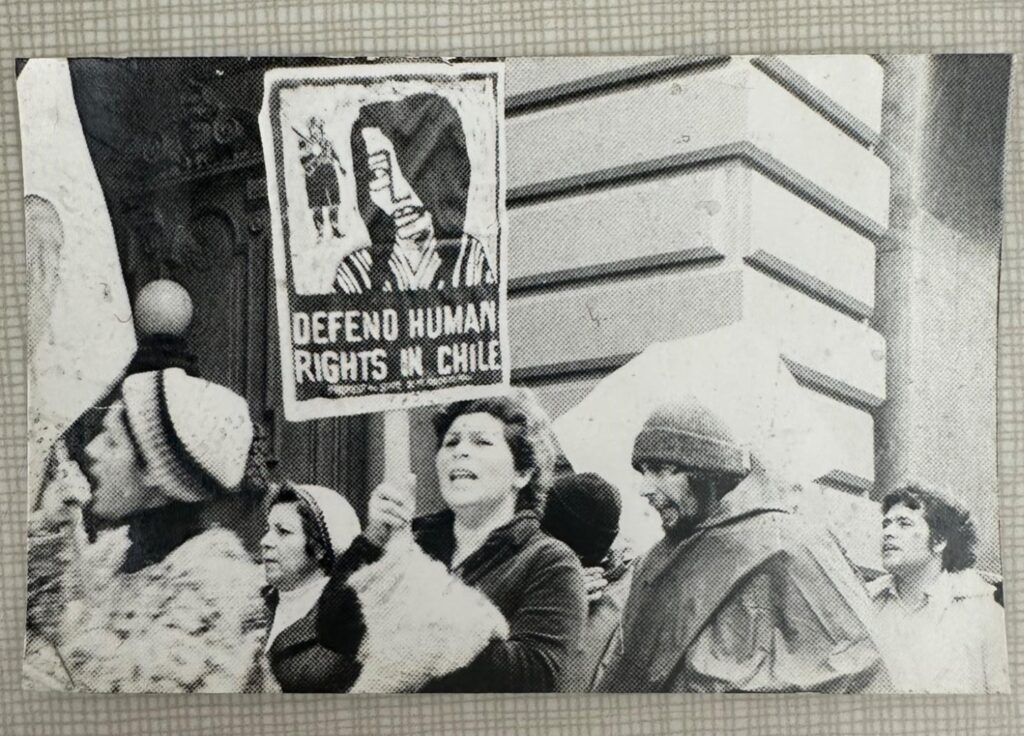
I am struck by the look on this unknown woman’s face – she looks both tragic and absolutely determined. It is meaningful to me that her decision to go out and protest that day is being preserved in the collection, and is being recognized and honored in the work of scholars.
Enhancing Searchability While Working From Home
As staff eagerly anticipate a return to more regular on-campus work, we have a guest posting by pictorial processing archivist Lori Hines. She provides a peek at one facet of work that we have been doing remotely in 2020-2021. -JAE
A posting by Lori Hines
Working from home during the COVID-19 closure has allowed Bancroft Library pictorial unit staff to enhance descriptions of digitized items, improving online searching.
One of my recent projects was to improve the description of items from the James D. Phelan Photograph Albums, BANC PIC 1932.001–ALB , which were scanned many years ago with only brief caption transcriptions. This photograph in album 85 is identified only as “Geneveve” [sic].
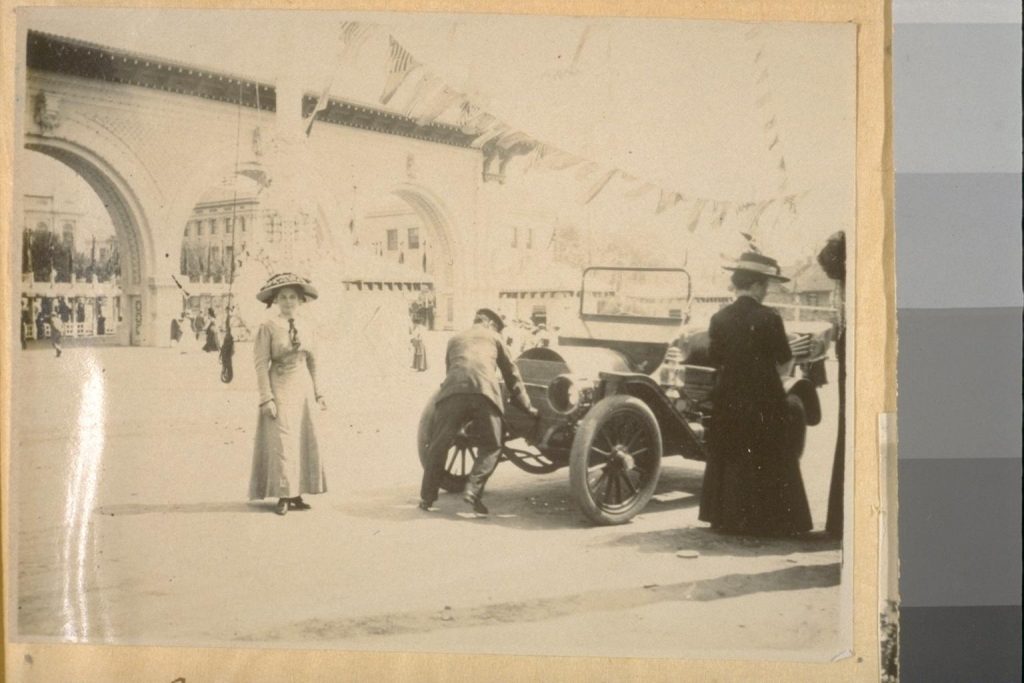
Having previously worked on collections related to the Panama-Pacific International Exposition, I had an idea that Geneveve, or Genevieve, could be posed at a similar event. Currently the photo is essentially unidentified and lost in the sea of images.
A photo a few places earlier in the album was identified as “Crossing Columbia River,” so that gave a clue to a possible region. A photo a few spaces later had a date of 1909, so that gave a probable date.
Doing a quick Google check, I typed in “Exposition US 1909”, and voila, I easily confirmed that Geneveve must be at the 1909 Alaska-Yukon-Pacific Exposition held in Seattle. I then added “entrance” to the search, because there appear to be turnstiles behind the arches. Google image search gave me some pretty good matches. There was one image from the Seattle Municipal Archives that showed the turnstiles with part of the arch. A couple of other pictures had better views of the arch.
Now we have a useful identification for BANC PIC 1932.001 Vol. 85:296—ALB:
Once the improved finding aid data has been uploaded, the topic will be retrievable by keyword searching at both the Digital Collections website and the Online Archive of California.
Not all of the items get this depth of attention, but this is one example that is worth the extra time. It’s been difficult being away from collections and researchers for over a year, but there is no shortage of online content with minimal identification, so there’s gratification in taking this time to make improvements.
Scenic Views, Civic Pride, and Silly Gags: Edward H. Mitchell Postcards at The Bancroft Library
We all feel our wings are clipped this holiday season, but you can enjoy a tour around turn-of-the-century California, journey up the Pacific Coast, around the American West, or even visit Hawaii and the Philippines, thanks to newly published content on the Berkeley Library’s Digital Collections site.
Over 10,000 postcards issued by San Francisco publisher Edward H. Mitchell, circa 1898-1920, are now online. This nearly-comprehensive collection was compiled over many decades by Walt Kransky, who generously donated it to The Bancroft Library. Walt’s website has been the go-to site for collectors interested in Mitchell cards; there he compiled a checklist of all known Mitchell postcards, whether he owned examples or not. And he did own the vast majority!
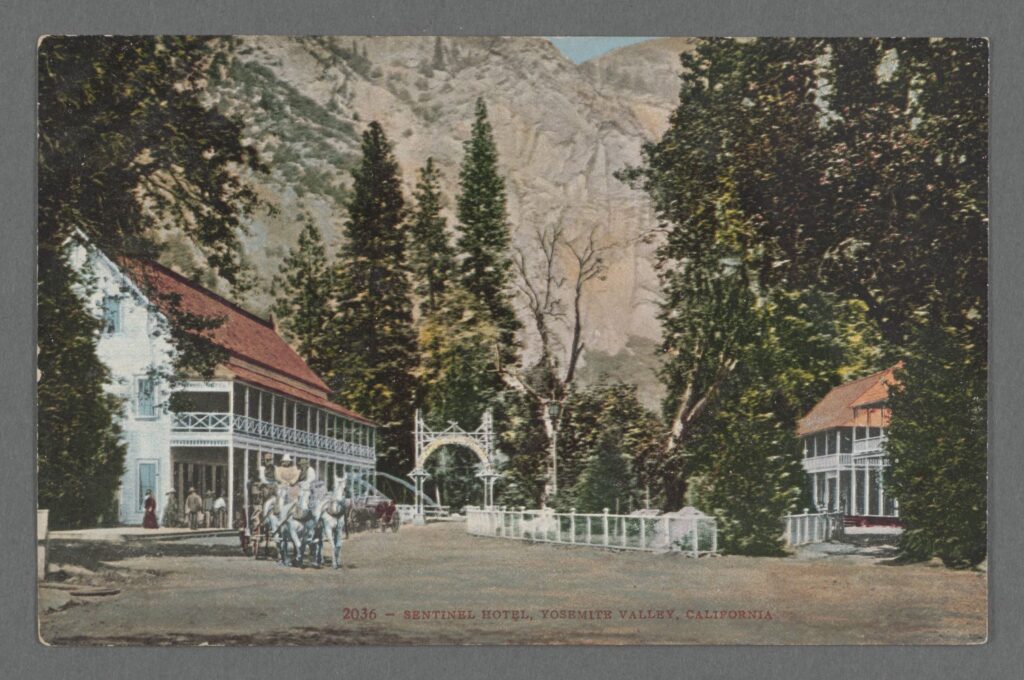

Must-see tourist sites from Yosemite to Southern California beaches and the mountains and forests of the Northwest are in abundance, but so are local industries, agriculture, and countless examples of small town pride.
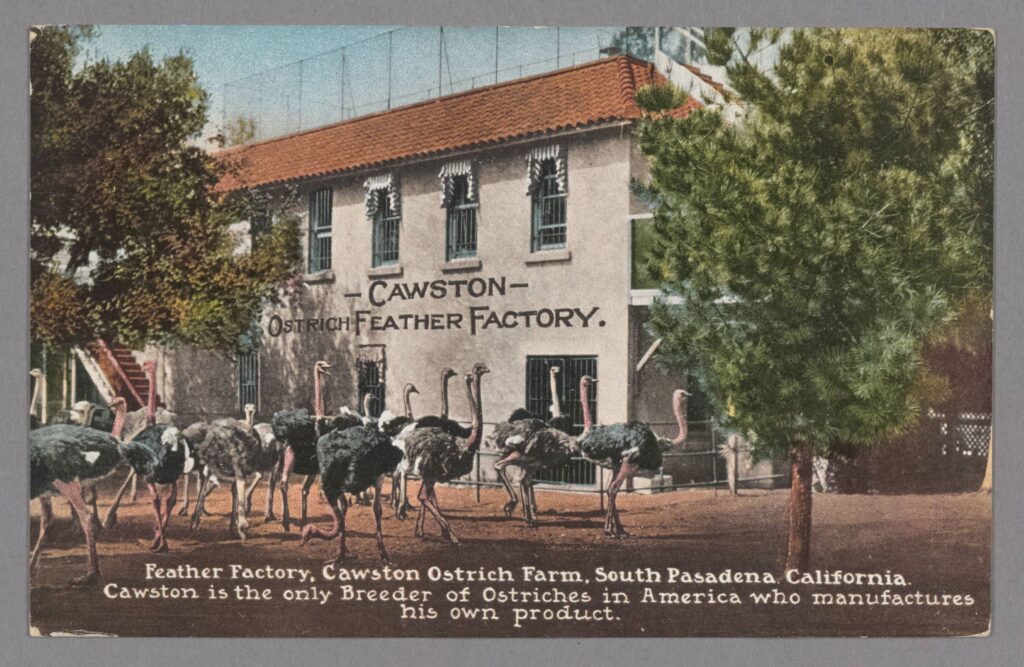
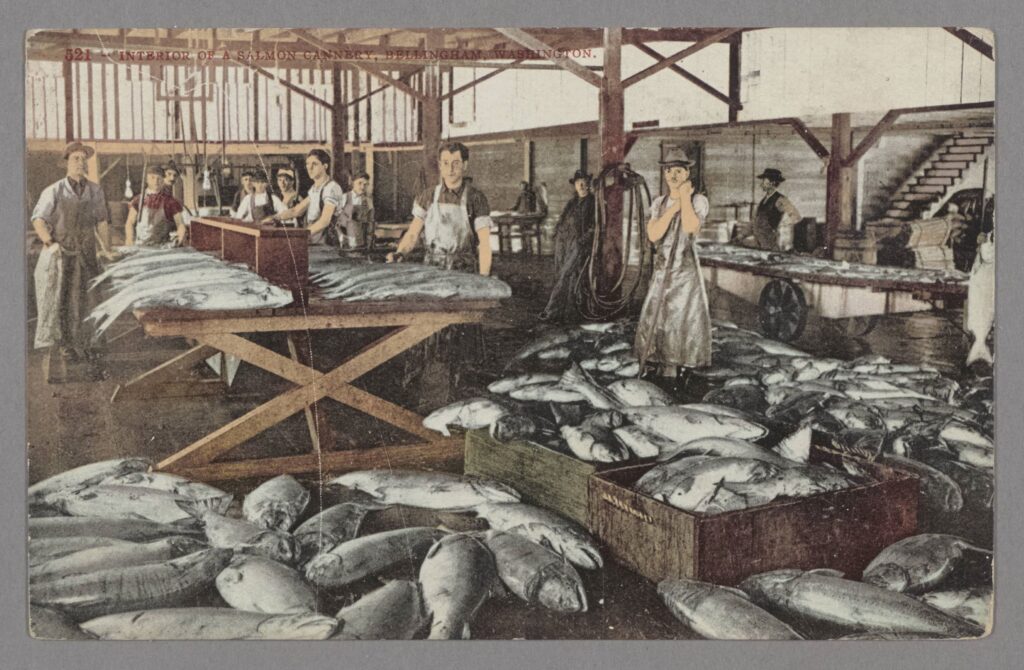
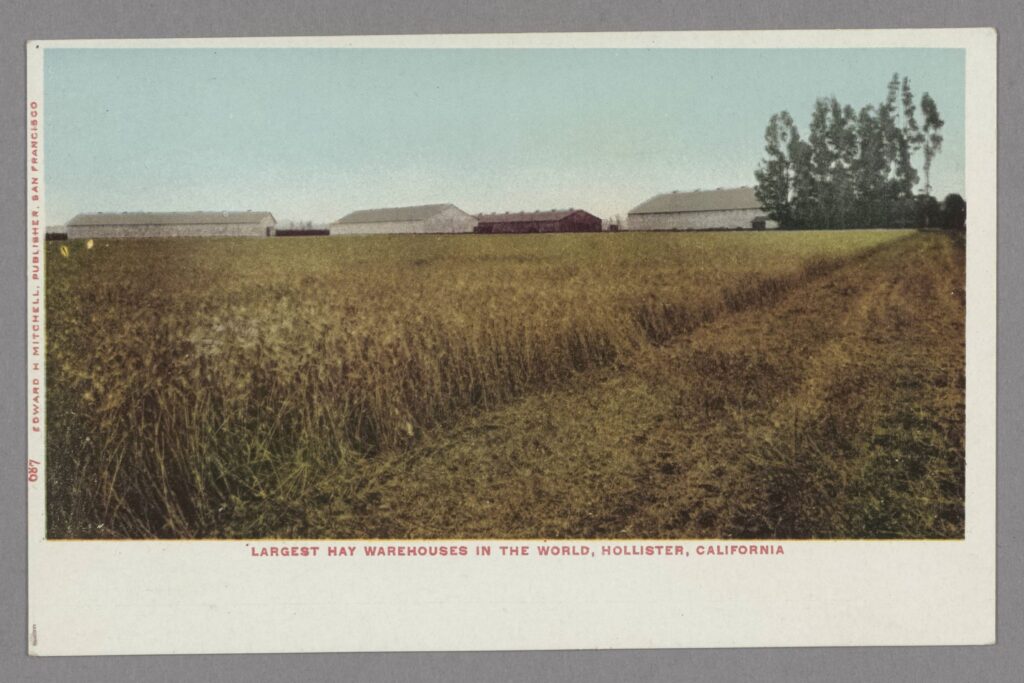
There is quite a range of court houses, schools, asylums, and even irrigation works on view.
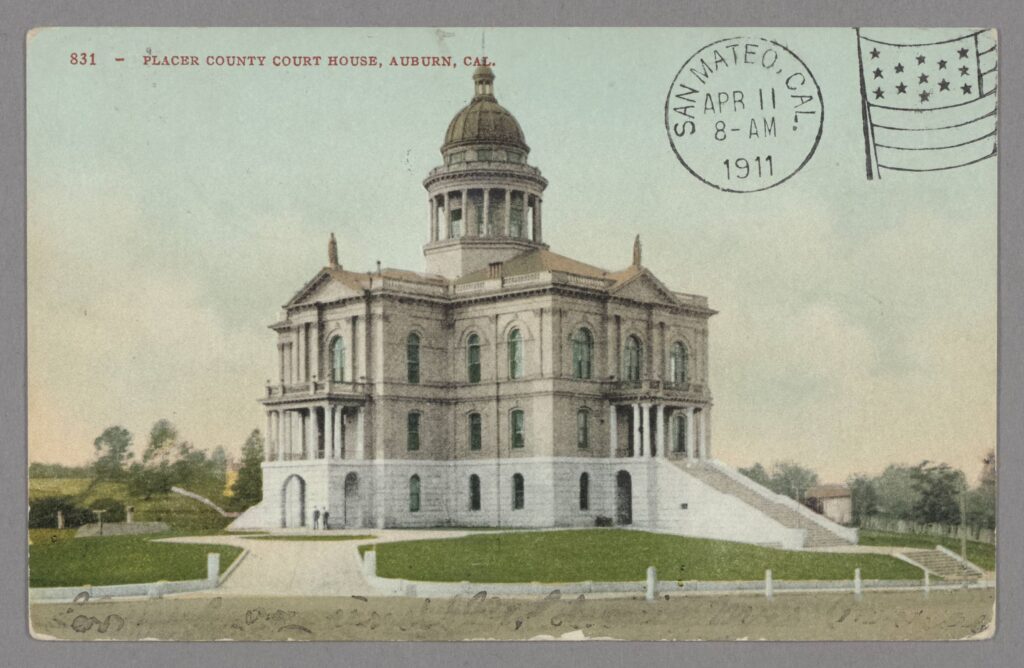
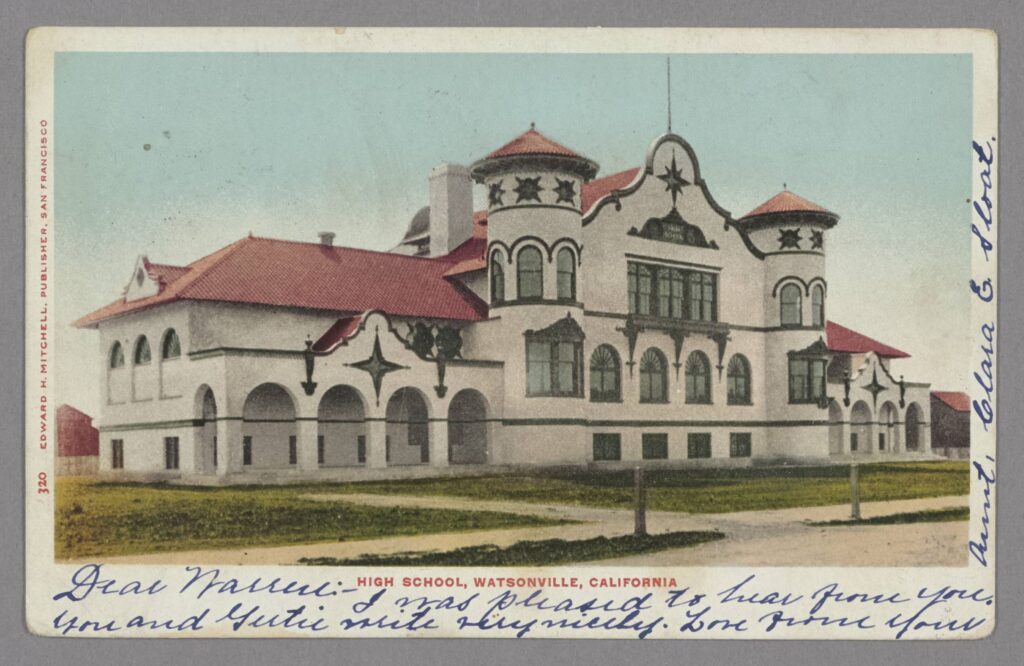
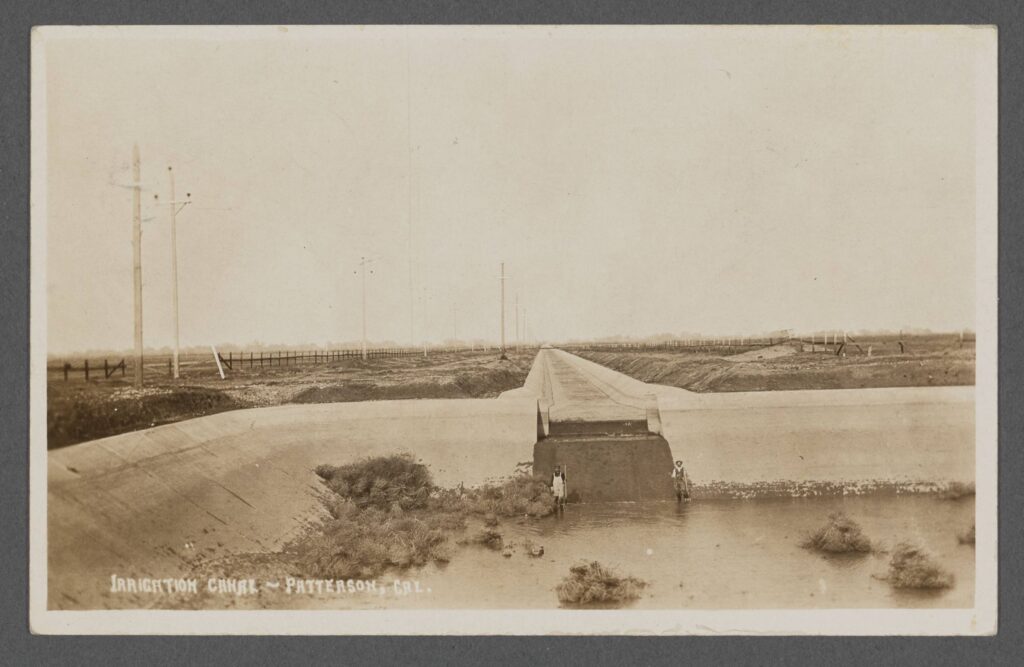
Period humor, for better or worse, is a recurring feature.
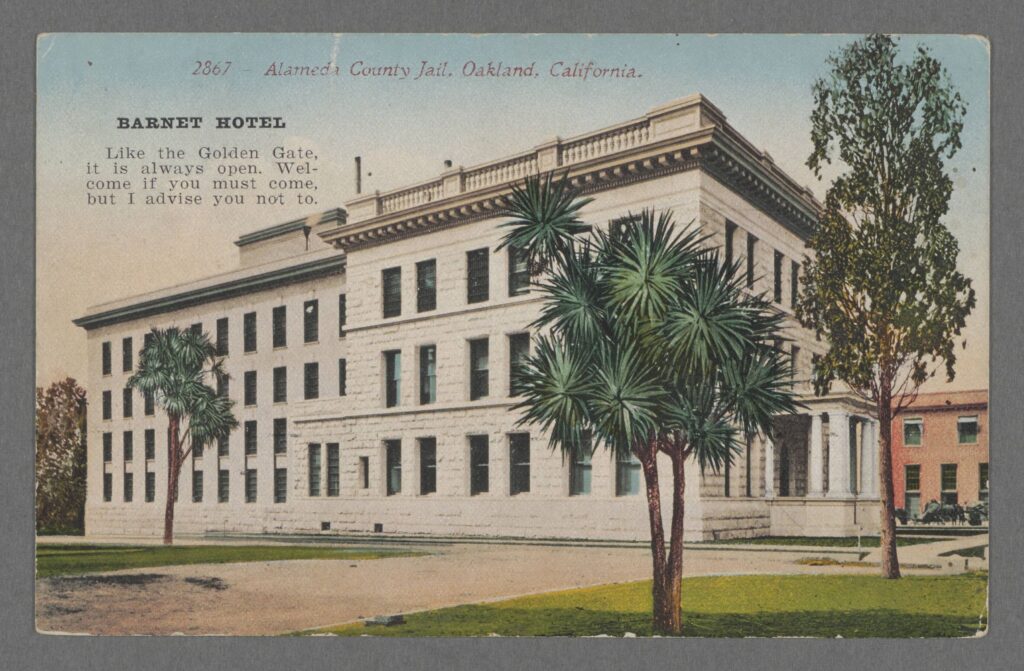
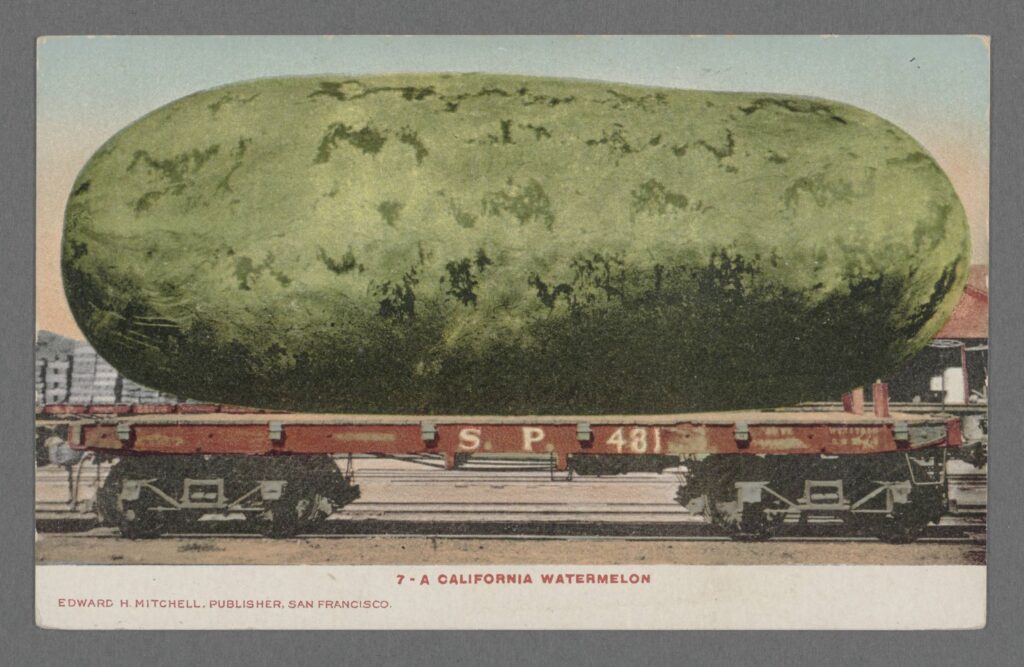
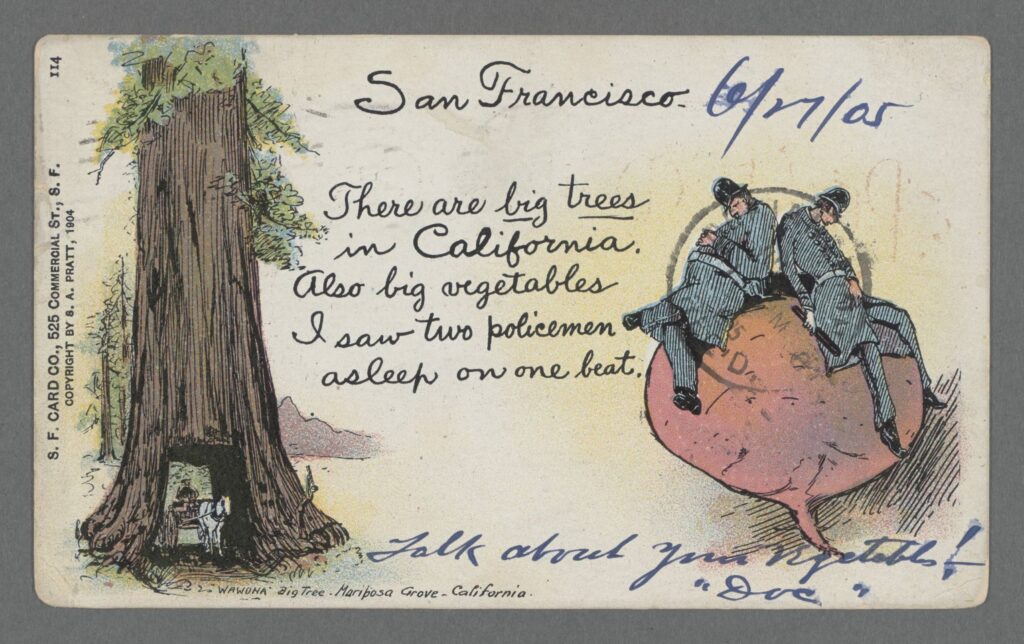
In addition to great images, Kransky’s Mitchell collection provides insight into the business of early postcard production. This was a new form when 1898 “Private Mailing Cards” were first issued as “authorized by act of Congress.”
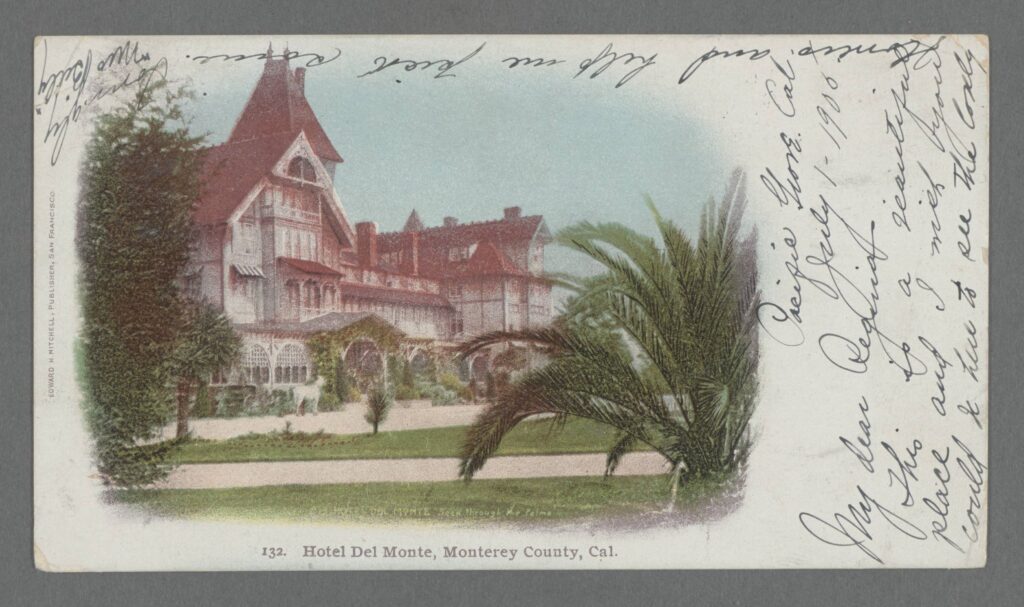
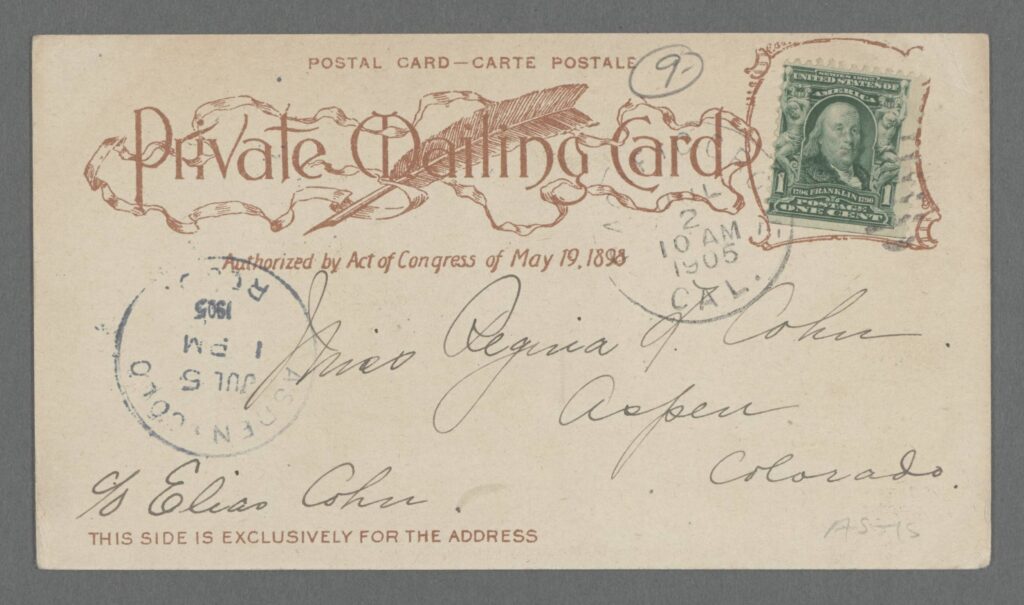
Walt Kransky arranged his collection by back type and imprint style and he collected duplicates of given images in all their various styles of presentation. This variety, all from a single publisher, offers great opportunity for scholarship and close studies of visual culture early in the 20th century.
So, whatever your interest, make a cup of cocoa and enjoy an armchair tour, courtesy the Walter Robert and Gail Lynn Kransky collection of Edward H. Mitchell postcards at The Bancroft Library!
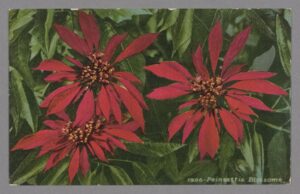
Many Library staff collaborated to bring this collection online. Bancroft curatorial and acquisitions staff worked with the donor to preserve this collection at Berkeley, and hundreds of hours of work on descriptive data and inventory alignment were carried out in Bancroft Technical Services’ Pictorial Unit. Library Imaging Services created the thousands of high resolution scans, and the descriptions and images were linked together and brought online through the efforts of Library IT. Most importantly, thanks are due to Walt and Gail Kransky for their generosity, his decades of collecting, and the years of expertise he committed to documenting his collection.
Photobooks by Women in the Reva and David Logan Collection
A posting by Christine Hult-Lewis, Ph.D., Reva and David Logan Curatorial Assistant
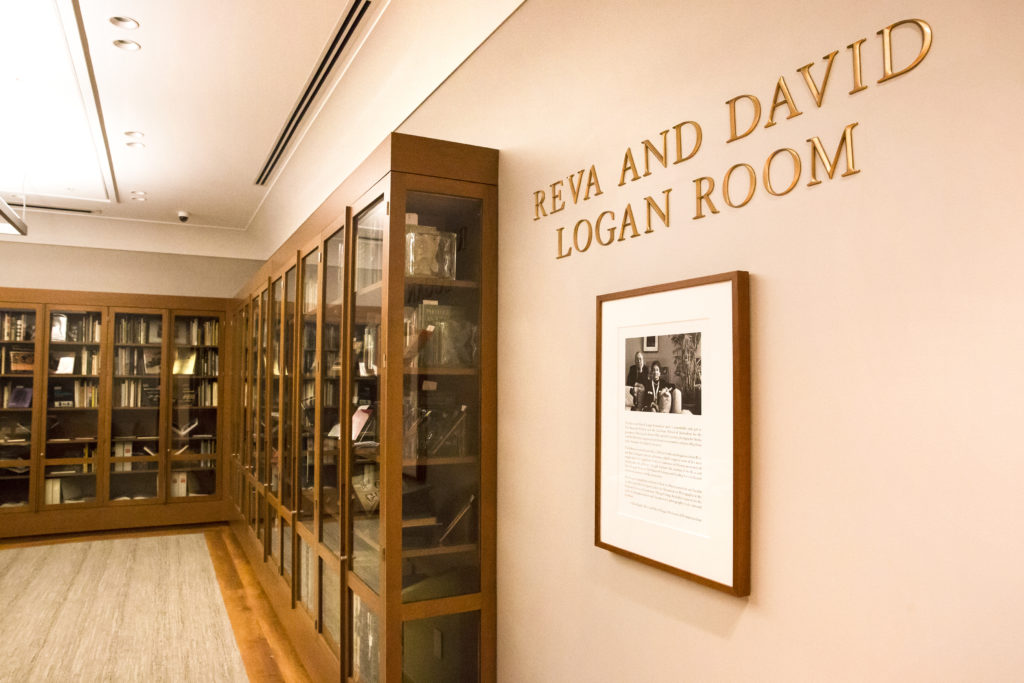
Tucked in the shelves of the Bancroft Library’s Reva and David Logan Collection of Photographic Books are some exceptional photography books by women photographers. Books illustrated with photographs were and are incredibly important in the history of photography: they are the best means to disseminate an artist’s work, are more readily available than photographic prints, and can wield an outsize influence in the public arena. Here is a selection of some of the most significant books by women in the collection.
EARLY MASTERS
One of the best known and most influential photographers of the nineteenth century is Julia Margaret Cameron, whose insightful and penetrating soft-focus portraits redefined the genre. Cameron was most interested in getting at the “truth” and “beauty” of her subjects; her best portraits strip away all context in favor of a focus on the face itself, as in the above image of her niece Julia Jackson (Virginia Woolf’s mother). Some forty-seven years after Cameron’s death, Victorian Photographs of Famous Men and Fair Women was published by Woolf, who also contributed an introduction.
Most women didn’t produce their own books until the early decades of the twentieth century, but some shared their work in the pages of Camera Work. This seminal photography periodical, edited by Alfred Stieglitz from 1903-1917, regularly featured women in its pages, such as Gertrude Käsebier, whose work appeared in the inaugural issue, and Annie Brigman. Both used the familiar techniques of Pictorialism—soft focus, romantic subject matter—in their beautifully printed photogravures. Each addressed different aspects of the female experience: Käsebier emphasized the maternal bond and motherhood, while Brigman focused on the symbolically-charged interplay between women’s bodies and the natural world.
The Pictorialist aesthetic championed by Käsebier, Brigman, and others would continue into the 1920s and 30s with photographers like Doris Ulmann. Ullman was interested in rural America and folk cultures, part of a general reassessment of what constituted authentic “American-ness” during the 1930s. The result was the 1933 collaboration Roll, Jordan, Roll, with Ullman providing the delicately-printed photogravures and author Julia Peterkin providing text. The book describes the lives of the Gullah people, many of whom were former slaves living in the coastal areas of South Carolina and Georgia. Ulmann’s images provide a sensitive and nuanced portrayal of lives lived in quiet dignity.
DOCUMENTARY PHOTOBOOKS OF THE 1930s
Some of the most influential photographic books of the Depression era were by women. Margaret Bourke-White’s You Have Seen Their Faces concentrated on what she and Caldwell perceived as the ongoing problems of the South: its extreme poverty, its pernicious and ongoing racism, and its damaged people. The book was popular, though it had, and has, its detractors, who objected to its condescending tone. By contrast, Dorothea Lange was one of the most respected practitioners of documentary in the 1930s, and made sure to give her subjects their own voice(s). Lange worked under the aegis of the US government-sponsored Farm Security Administration, taking photographs intended to help support the various projects of agricultural reform. This book was a true merger of empathetic, artistic images and dispassionate, statistical text. Another government-sponsored project, Berenice Abbott’s Changing New York, shifted the attention from rural people in distress to the changes and dislocations of that quintessential American city, New York. Abbott was particularly attuned to the beauties of the ever-changing city, and the transformations wrought by that peculiarly modern structure, the skyscraper.
PHOTOJOURNALISM
Margaret Bourke-White wasn’t really a documentarian; her true metier was photojournalism. She worked for the earliest pictures magazines in the United States, Fortune and Life. Bourke-White was the first photographer to go to Soviet Russia; sent there by Fortune in 1930, her experiences there became the book Eyes on Russia. Concurrently with her work on picture magazines, she wrote or co-wrote twelve books, five of them during the war years. She spent much of the war in the European theater of operations, where she became accredited as an official Army Air Force photographer. She worked incessantly, took all kinds of risks, made thousands of pictures, and managed to churn out books at an astonishing rate. North of the Danube recounts the months when Germany invaded Austria and Czechoslovakia, while Dear Fatherland, Rest Quietly attempts to grapple with the horrors of the Holocaust. The Logan Collection has fine examples of every one of her books.
THE 1970s
By the 1970s, the lack of women in the photographic canon did not go unnoticed by women artists, feminists, and their allies, and they sought to redress this exclusion and promote a more inclusive point of view. This took place in not only in museum exhibitions but also in photobooks, including anthologies like these that sought to uncover the work of women photographers whose names had dropped off the radar of popular culture and photographic history.
New monographs by young photographers like Judy Dater explicitly explored gender, examining different conceptions of femininity, sexuality, and agency in portraiture. Dater’s work can be seen as a kind of modern extension of Julia Margaret Cameron, in her explorations of the human psyche through expression, gesture, and light itself. Diane Arbus—this book of her photographs would not be released until after her death in 1971–would redefine the documentary project with her highly-charged photographs in the 1960s. Like Bourke-White, she took risks and went where others dared not go; she could almost be described as a photojournalist of the psychological.
The Logan Collection is a wonderful resource to study the photobooks by women, as well as many other themes in the history of photography. I hope this brief overview of this collection sparks further study. For more information, see the online overview of the Logan Collection. Books are available for onsite use in Bancroft’s reading room, and can be requested from OskiCat via our online paging system.
Viewing History through Photographic Negatives: One Chapter in the Travels of the Black Panther Party International Section
A guest posting by Bancroft researcher E. Rafael Perez
We are happy to present a guest posting by researcher E. Rafael Perez, who shares his experience viewing original photographic negatives in the Bancroft reading room. Negatives, often with no matching prints extant, are made available by appointment with a week’s notice. Researchers may make their own reference snapshots for personal study, as illustrated below, and may place photo orders for high quality digital imaging of selected items.
Since being acquired by the Bancroft Library, the Eldridge Cleaver Papers have given scholars a glimpse into his eclectic experiences. Spanning his early days as Minister of Information for the Black Panther Party, continuing into his time in exile as head of the Black Panther Party’s International Section, and following right on through to his eventual return to the United States—after which he served time in prison, became a born-again Christian and made appearances in support of the Republican Party—the Cleaver Papers and the Eldridge Cleaver Photograph Collection provide context into a complex and layered life. The rarely-seen photographic negatives found in the Eldridge Cleaver Photograph Collection provide consequential traces of life events not covered by other parts of the collection.
For the uninitiated, photographic negatives are the in-camera originals of 20th century photography, in the form of sheets or strips of film in which the darkest areas of a photographed subject appear lightest and the lightest appear darkest. At the Bancroft Library, negatives are stored at 40 degrees Fahrenheit and 30 percent relative humidity. Interested parties make an appointment ahead of time to schedule a viewing, as negatives must spend some time acclimatizing before use. This process highlights archivists’ challenge of balancing the best practices of presentation to the researcher and the best methods of preservation. Nevertheless, examining the over 480 35-millimeter negatives of the Eldridge Cleaver Photograph Collection provides fertile ground for historical exploration.


In 1970 Eldridge and Kathleen Cleaver traveled to North Korea, in part because Eldridge had helped organize the United States Anti-Imperialist Delegation. The delegation traveled between North Korea, China, the USSR, and Vietnam in search of models of self-sufficiency during the Cold War. The delegation consisted of representatives from various political and media organizations. (A full list of delegation participants is available online via the Wilson Center.) At the time, North Korea sought to project itself as a model for postcolonial development to the decolonizing world. Cleaver’s own disillusionment with this vision of North Korea would not come until later, a shift that is also covered in the Cleaver Papers. While some may believe the photographic negatives to be the unfinished and inconvenient templates of the photograph collection, the negatives provide more possibilities for analysis through their many unprinted strips.
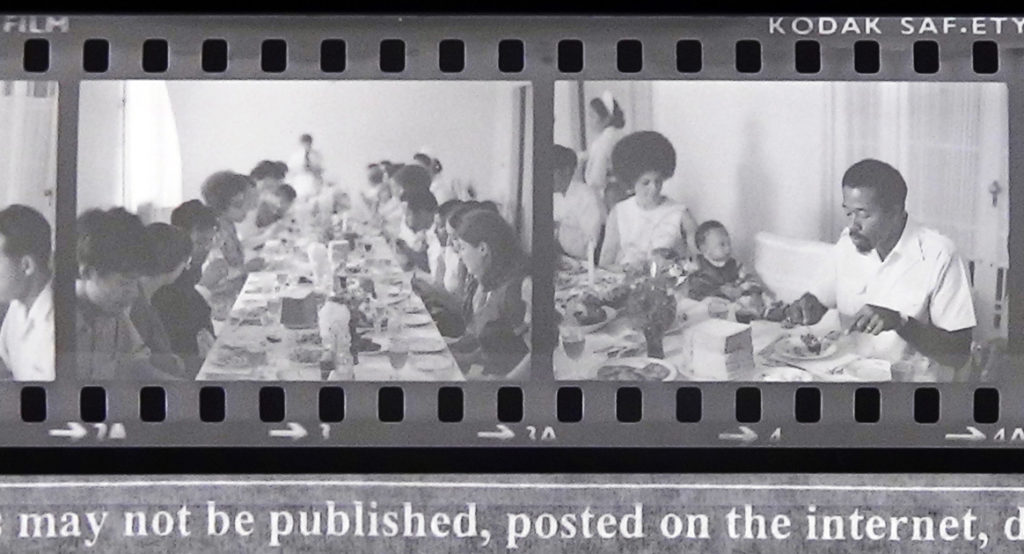
One example of the usefulness of the Cleaver negatives is a series, reproduced in part here, that depicts a birthday party held for Kathleen and Eldridge Cleaver’s son Maceo. The negatives provide an intimate portrait of the event, as the family is flanked by Korean and American attendees. Though these photographs were apparently not printed by Cleaver, we see through them a new thread of information that helps us piece together the visual history of Cleaver’s travels and, more broadly, the exchanges between the Black Panther Party’s International Section and solidarity movements among nations of Asia, Africa, and Latin America.

Rather than using images to simply supplement textual evidence in historical writing, this instance reveals the possibilities for expanding narratives through visual histories. How might we more frequently incorporate the use of photography in its rawest and least edited form—the negative—as a source in the study of history? How might we seek to incorporate visual resources into narratives while still maintaining a critical lens regarding these events? To begin to answer these questions as a community, researchers might begin to look for similar threads within their own source bases.
References
- Bloom, Joshua and Waldo E. Martin. Black Against Empire: The History and the Politics of the Black Panther Party. Berkeley: University of California Press, c2013.
- Malloy, Sean. Out of Oakland: Black Panther Party Internationalism During the Cold War. Ithaca: Cornell University Press, 2017.
- Wu, Judy Tzu-Chun. Radicals on the Road: Internationalism, Orientalism, and Feminism during the Vietnam Era. Ithaca: Cornell University Press, 2013.
- Young, Benjamin. “Juche in the United States: The Black Panther Party’s Relations with North Korea, 1969-1971.” In The Asia-Pacific Journal, Vol. 13, Issue 12, No. 2, March 30, 2015.
E. Rafael Perez is a PhD Candidate in the Department of History at the University of Chicago. He is a recipient of the 2018 Mellon Fellowships for Dissertation Research in Original Sources, administered by the Council on Library and Information Resources (CLIR). For more recommendations that reflect the recent rise of rigorous historical research related to the Black Panther International Section, please contact him at erp1[at]uchicago.edu.
Now Online: Images from Glass Negatives of the Panama-Pacific International Exposition
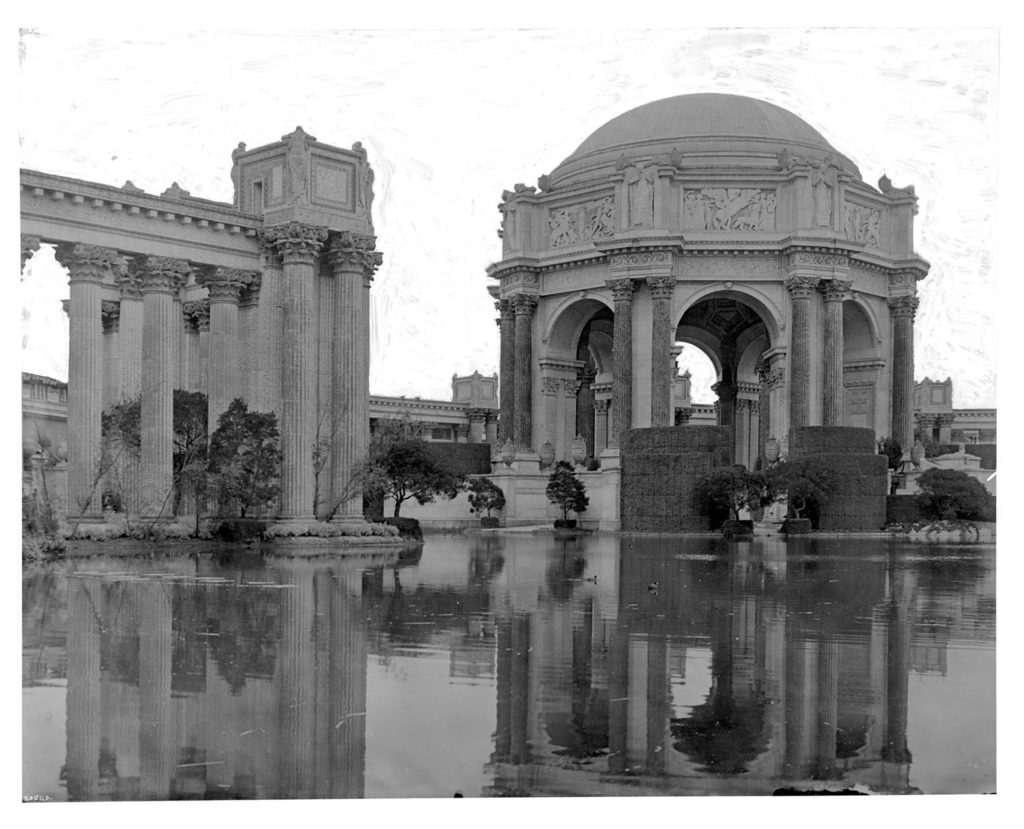
The Bancroft Pictorial Processing Unit is proud to announce that The Edward A. Rogers collection of Cardinell-Vincent Company and Panama-Pacific International Exposition Photographs has been organized, archivally housed, individually listed, and made (substantially) available online. This work was accomplished over two years, thanks to grant support from the National Endowment for the Humanities and, of course, careful hard work on the part of many library staff.
In this blog posting, Project Archivist Lori Hines describes some of the most challenging (and rewarding) work; preserving and providing access to fragile and often damaged glass negatives.
Handling Glass Plate Negatives: A Lesson in Mindfulness
The Rogers collection of Panama Pacific International Exposition photographs, received as a gift in 2014, includes over 2,000 glass negatives. These fragile items required special handling and archival containers with padding. Hardest to work with were approximately 150 oversize glass negatives ranging from 11 x 14 inches to 12 x 20 inches. Antique glass can become brittle and, of course, is heavy. From handling to wheeling the negatives back and forth to the conservation department and the digital lab, one had to be very conscious of every move and step taken.
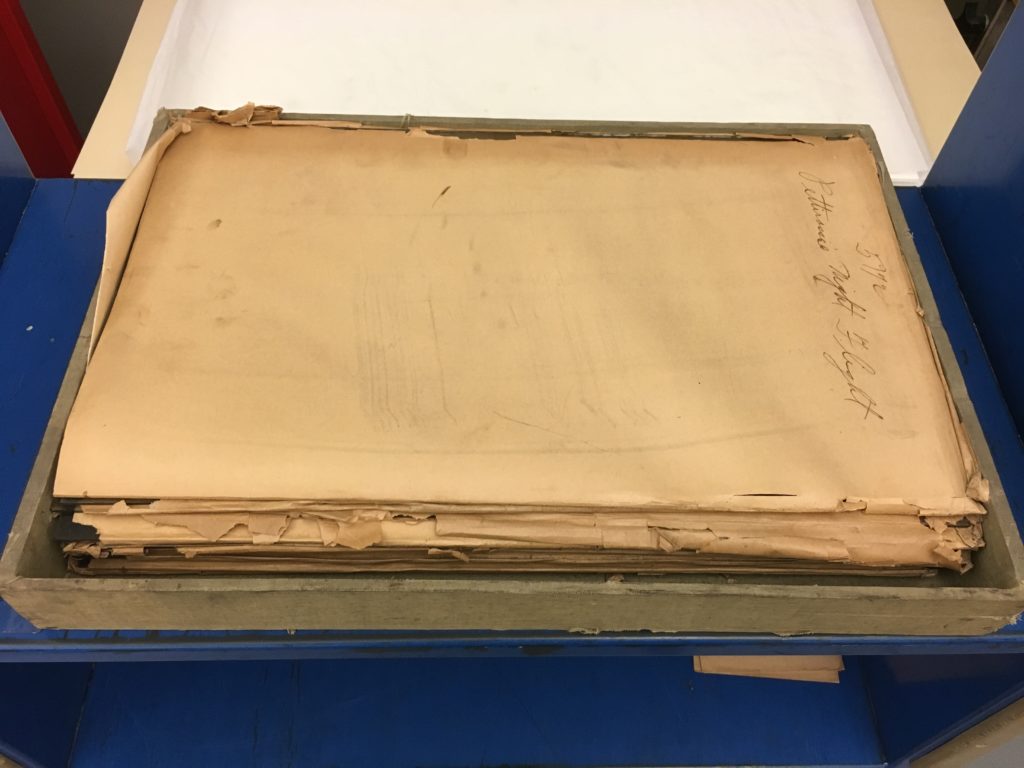
This first photo shows how the negatives were received in the library. Note they have no padding between the plates and there are only original, brittle sleeves to protect them. A stack of ten or fifteen is very heavy and getting your fingers under one, to lift it off the stack, is challenging. The weight of the negatives on top of each other is also a risk — the antique glass can easily crack under the weight.
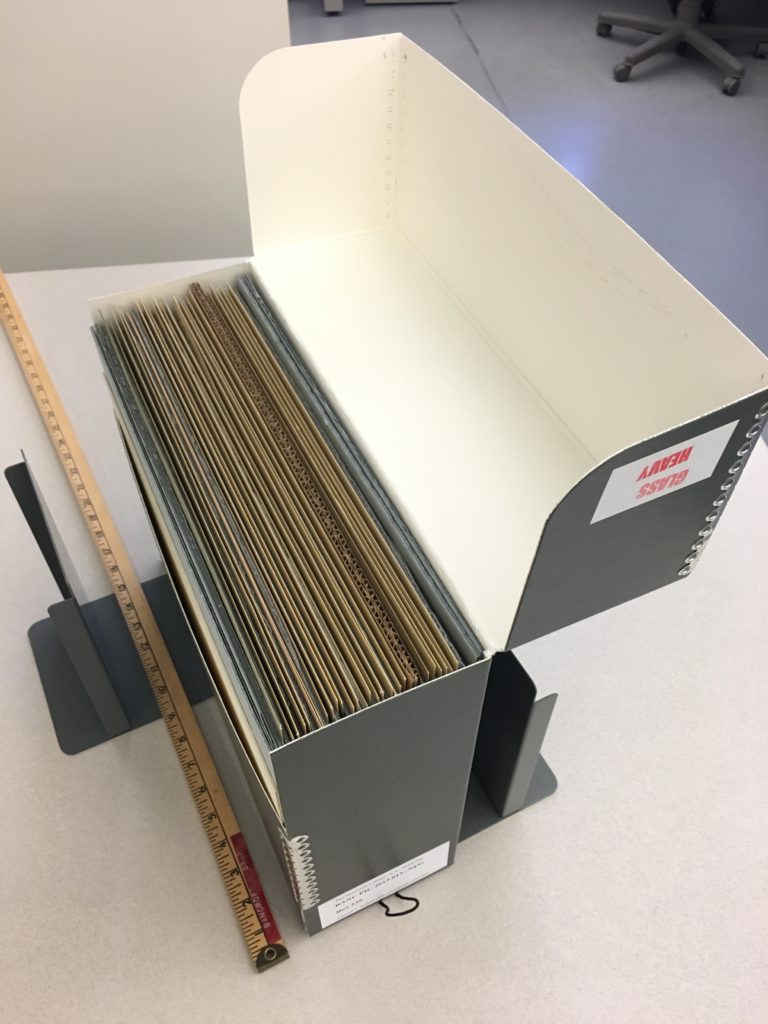
This photo shows how the negatives have been housed by library staff; vertically with corrugated archival cardboard around each. Our library conservators designed the housing to limit box weight, to provide protective padding, to protect the plates from abrasion as they’re removed, and to make handling safer.
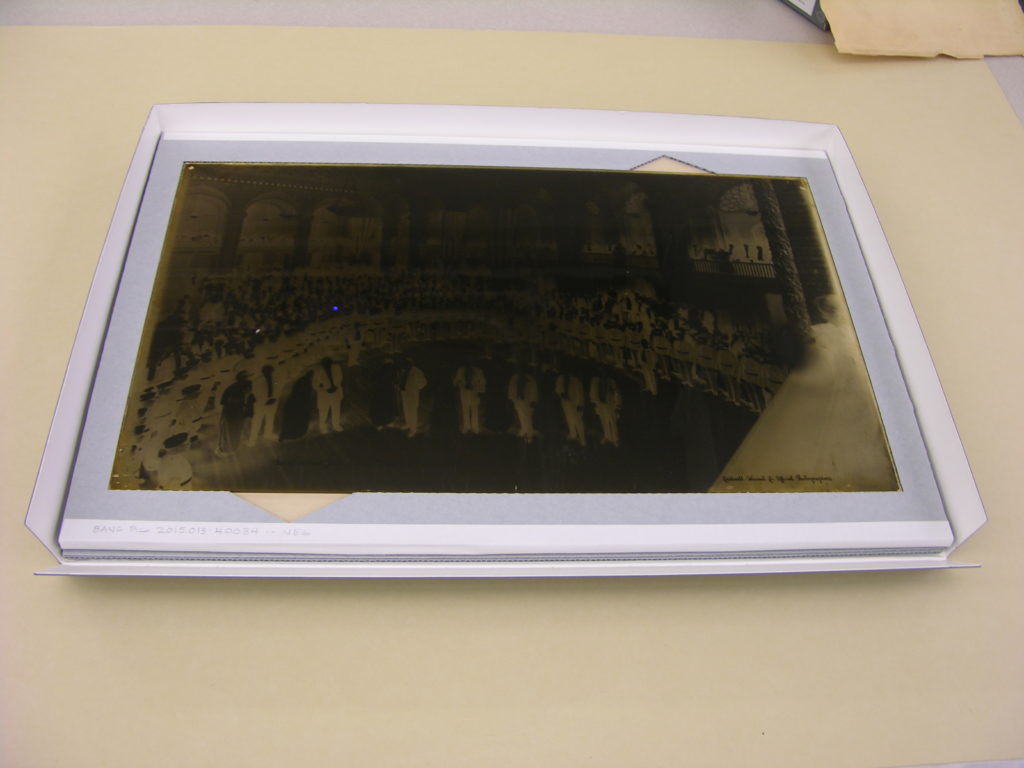
The largest plates, at 12 x 20 inches, needed another housing solution because it was impractical to store them upright, but the weight of one on another was a concern. The Library’s Conservation Department built custom trays to hold each 12 x 20 negative, with just three plates (and their trays) in an archival box that is stored flat on a cabinet shelf.

The negatives are handled on the long side of the glass to offer best support and, during the cleaning, housing, and inventory process, are rested on a piece of thin foam padding to buffer any impact with the work table.
About 10% of the negatives arrived broken. To be digitized, we had to re-piece the broken negatives together on a supporting sheet of glass, like a puzzle, then hand it off immediately to the photographer in the Library’s Digital Imaging Lab. The glass sheet with the broken negative on top was then placed on a light table, so it was lit from behind, to be captured by the digital camera. The light table and camera are visible in the background of this image.
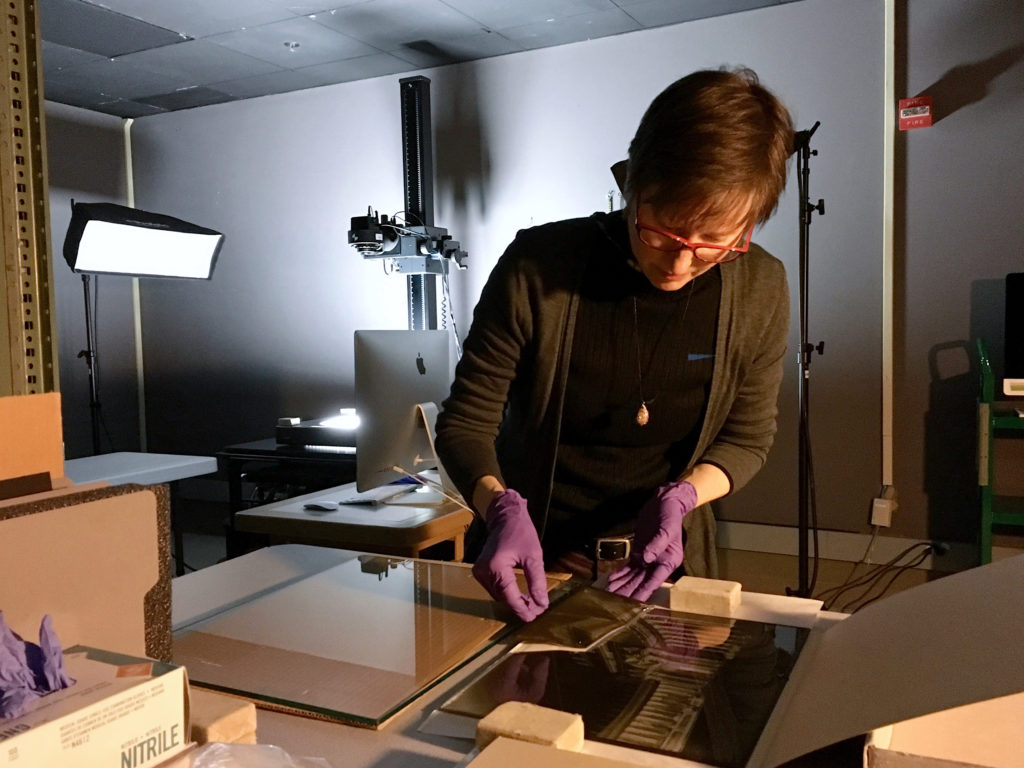
The results were often quite satisfying, as can be seen in this example of a badly broken glass negative that was pieced together.
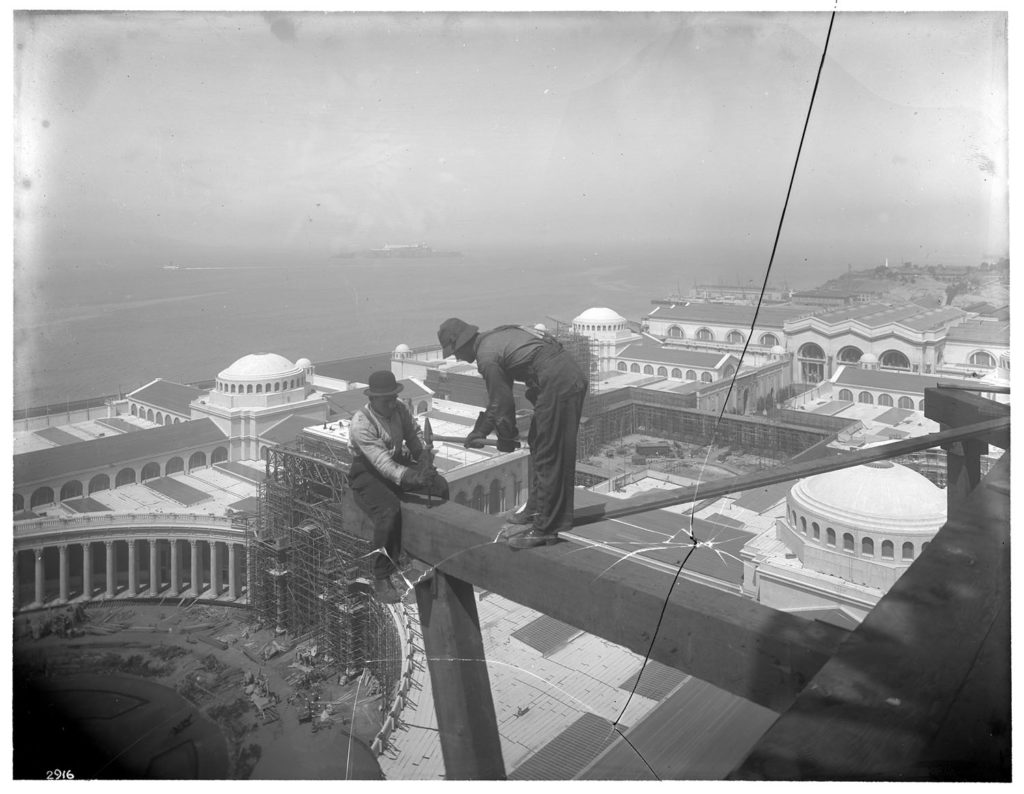
The finding aid describing and listing the entire Rogers collection, with more than 2,000 digital images, may be viewed at the Online Archive of California.
To browse examples of images scanned from broken plates, try searching the finding aid for “negative is broken”, and navigating through the results, or by browsing this Calisphere website search that retrieves just the broken-plate images.
Special thanks go to Christine Huhn and the staff of the Digital Imaging Lab; Hannah Tashjian, Erika Lindensmith, Martha Little, and Emily Ramos of the Conservation Department; staff of the Library Systems Office and the California Digital Library that worked with us to get the material online; to Gawain Weaver Art Conservation (contractors for preservation and scanning of panoramic film negatives), and to the Bancroft Pictorial Unit team that devoted much or their 2016-2018 work life to this effort: Lori Hines, Lu Ann Sleeper, and a crew of student staff.
On View Now: The Summer of Love, from the Collections of The Bancroft Library
Marking the 50th anniversary of the Summer of Love, an exhibit in the corridor between Doe Library and The Bancroft Library features Bancroft’s rare and unique collections documenting the world-famous Bay Area counterculture of 1967.
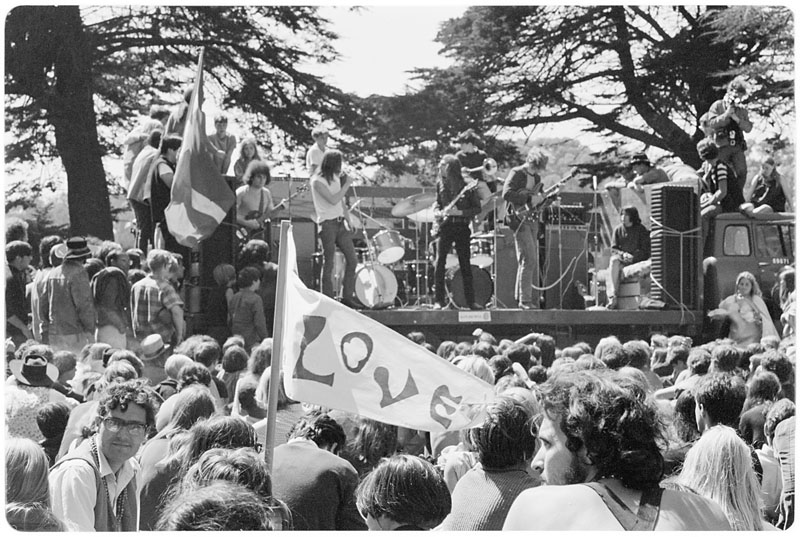
![A young hippie woman with feathers that look like antlers, in day glow face paint, Avalon Ballroom, 1967] Ted Streshinsky, photographer.](https://update.lib.berkeley.edu/wp-content/uploads/2017/07/cubanc00002896_pm_a_ih.jpg)
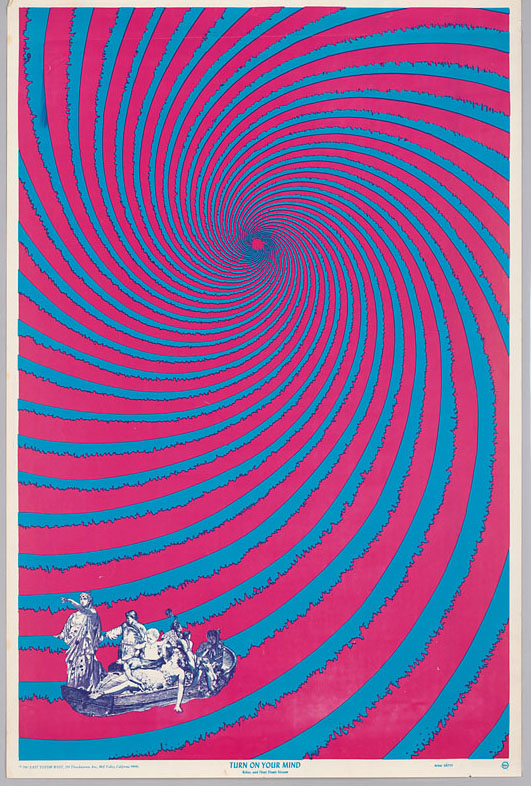
This exhibit, prepared by Chris McDonald and James Eason of the Bancroft Library Pictorial Unit will be on view through Fall 2017.
1915 Panama-Pacific International Exposition: Stories through Photographs
A guest posting by Seamus Howard, Student Archival Processing Assistant in the Pictorial Unit, Bancroft Library
What makes a photograph good?
As a student working in the Bancroft Pictorial Unit, I’ve been going through hundreds and hundreds of photographs daily. I’ve seen my share of good and bad photos.
One might stand out as “good” due to the lighting, crisp focus, correct staging, and exposure — good cropping perhaps, or just clarity of subject. Ultimately, the answer is a combination of factors, and can be completely subjective.
For me, the most important factor is moment.
The 1915 Panama Pacific International Exposition was full of special moments captured in photographs which continue to shed light on the character and tone of the United States during the early 20th century.
One special moment was former President William Howard Taft visiting the P.P.I.E.
Working to re-house and inventory about 6,700 photographic prints in large, brittle ledger books, I’ve encountered numerous shots of this visit, thoroughly recorded by the Cardinell-Vincent Company, the exposition’s official photographers.
President Taft was an early supporter of the exposition, declaring in early 1911 that San Francisco would be the official home of the fair. He attended the groundbreaking eight months later and returned to San Francisco in 1915 to see the fair in all its glory.
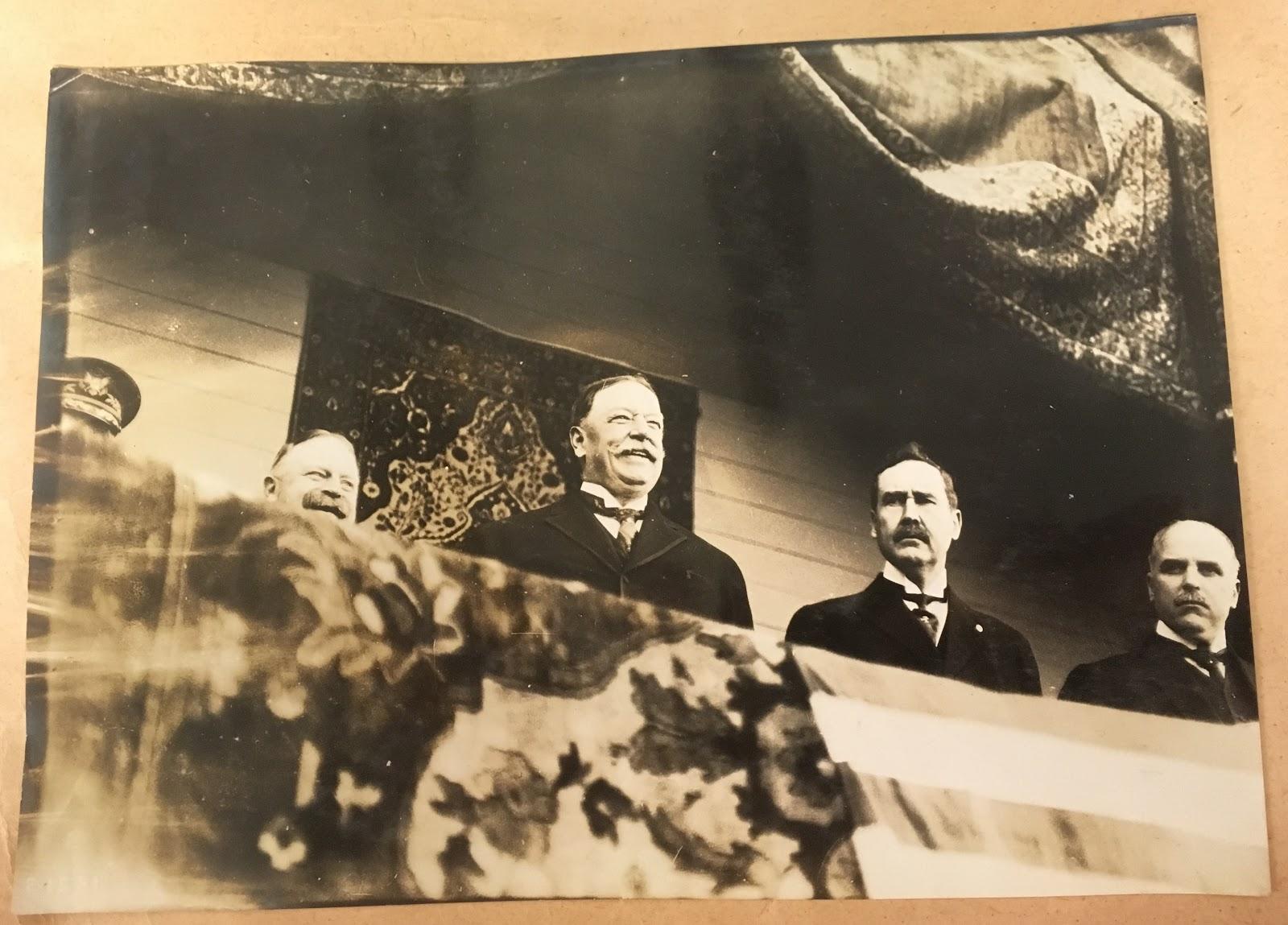
Taft’s visit to the fair was seemingly a large event. He was accompanied wherever he went, soldiers or guards escorting him from building to building. Taft continued to be a very important person at this time. He had lost his reelection to Wilson in 1912, and returned to Yale as a professor of law and government.
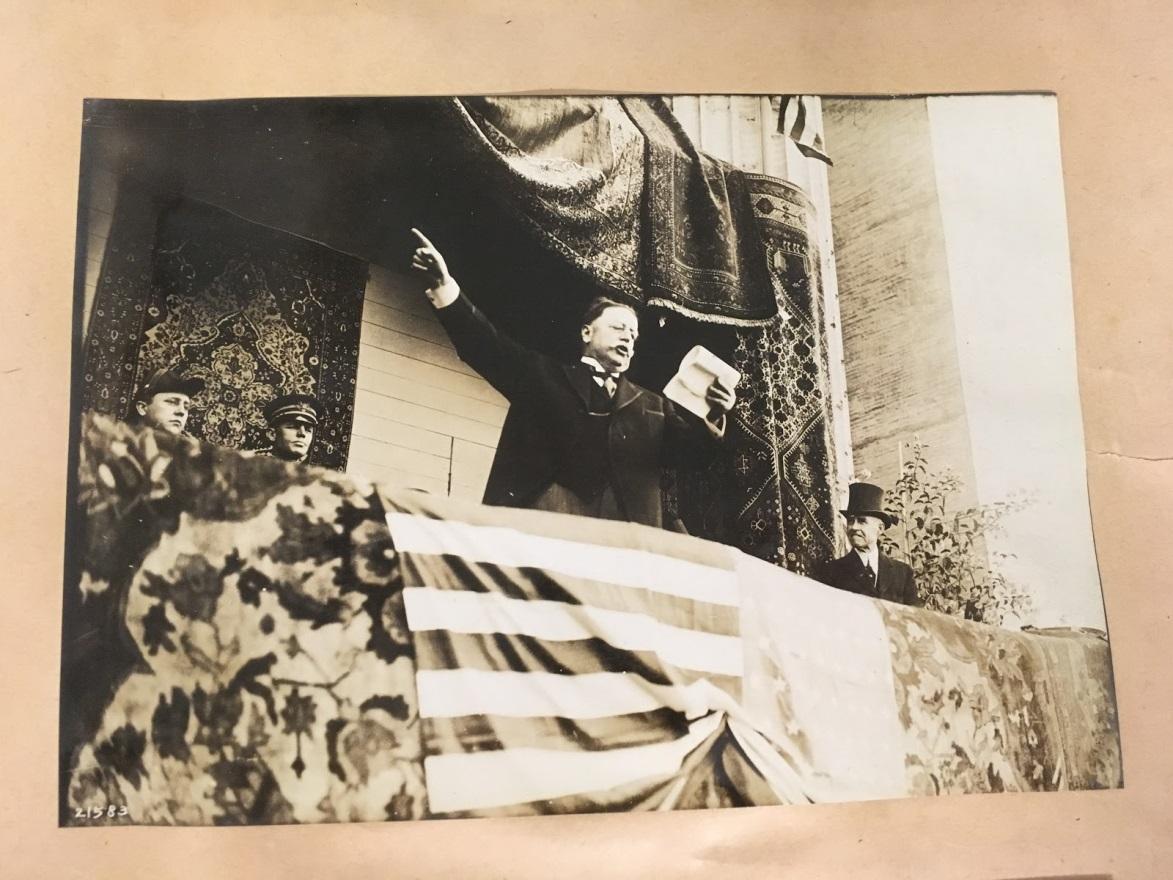
Taft visited many of the fair’s popular buildings and exhibits, including the Japanese Pavilion, Swedish Building, Norway Building, and the art gallery and courtyard of the French Pavilion. He met foreign representatives, fair officials, and experienced much of what the fair had to offer.


And President Taft experienced the unique blend of cultures and stories the fair provided. Here, in my favorite photograph of Taft’s time at the fair, he walks through a hall lined with busts in the Swedish building, flanked by guards. Taft seems enveloped by the art and is perfectly framed between his escorts and the lines of busts, drawing your eye towards Taft at the center. This moment makes a great photograph.
The Bancroft Pictorial team continues to house and describe the collection, and will update this blog with more photographs and details as we progress. Stay tuned!
Faces in the Crowd
In the Bancroft Library Pictorial Unit, work continues on 115 panoramic Cirkut camera negatives being conserved and scanned as part of our NEH-funded work on the Edward A. Rogers Panama-Pacific International Exposition Photograph Collection.

The digital images produced give the chance to peer into these panoramic scenes and pick out small details – and often our gaze is returned by characters in the crowd, caught some 102 years ago.
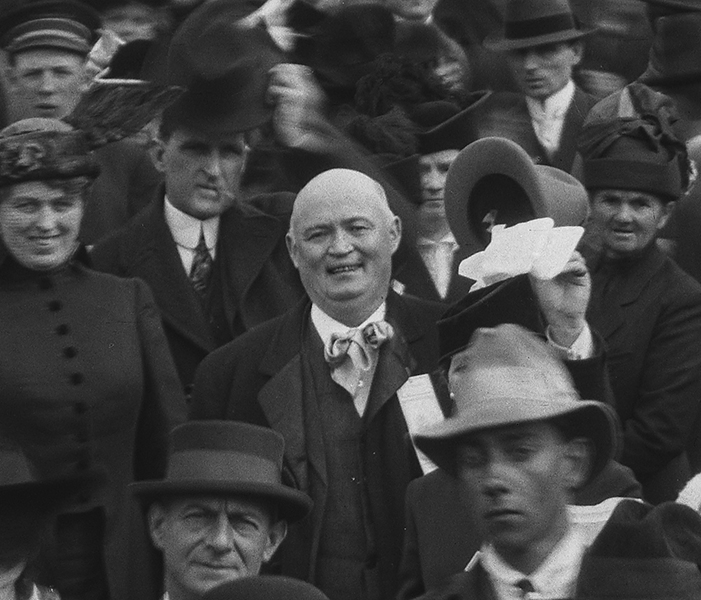
The panorama (pictured above) at the Fillmore Street Gate on San Francisco Day, November 2, 1915, is among the best crowd shots, and all the images in this posting are details from it. At center the throng recedes eastward into the distance, down the thoroughfare of popular amusements known as The Zone. At left the crowds fill the Avenue of Progress which leads toward the bay, past the Machinery Palace. At right are the entrance gates, with the ridge of the Pacific Heights neighborhood beyond.
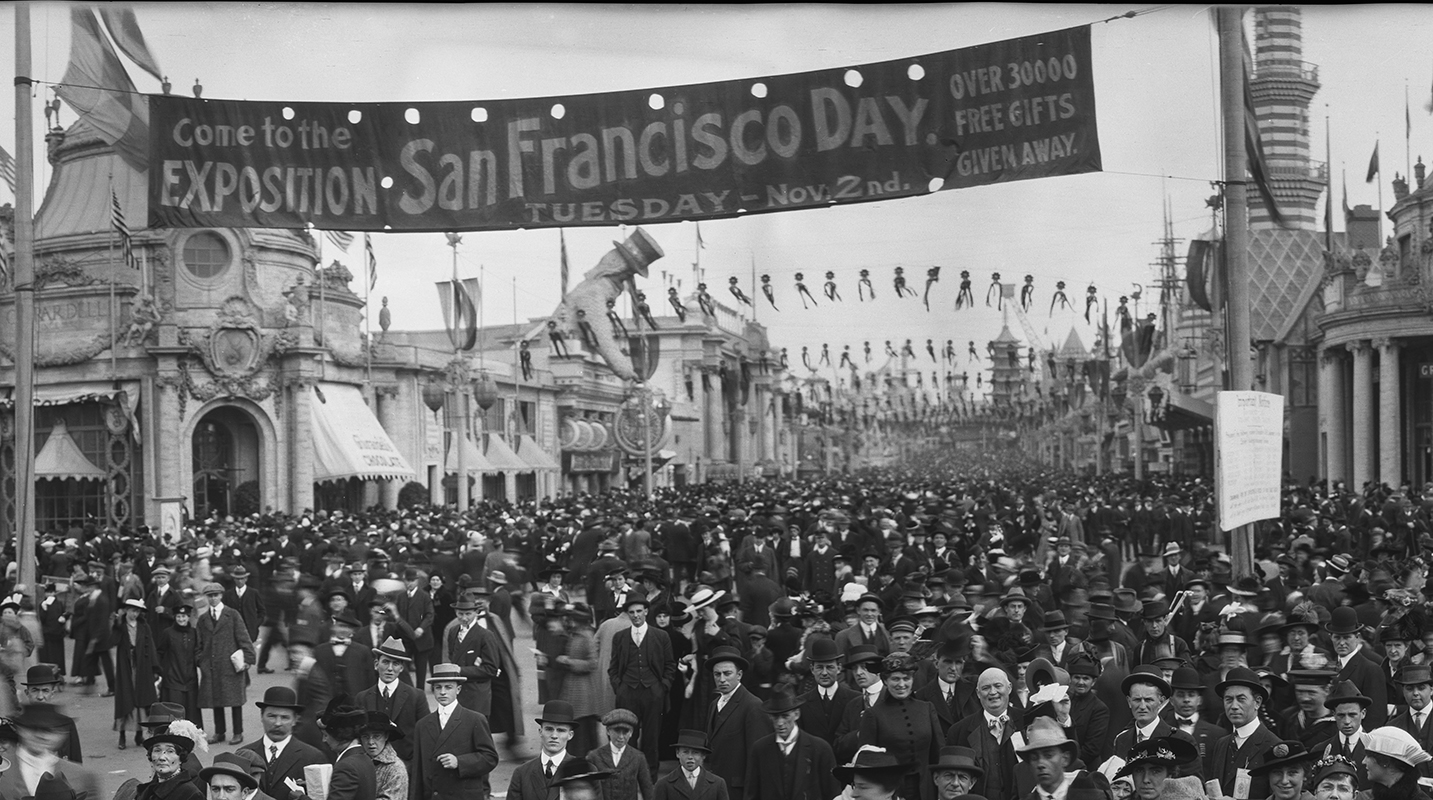
In the crowd there are so many marvelous faces (not to mention terrific hats!) that it is hard to select favorites.
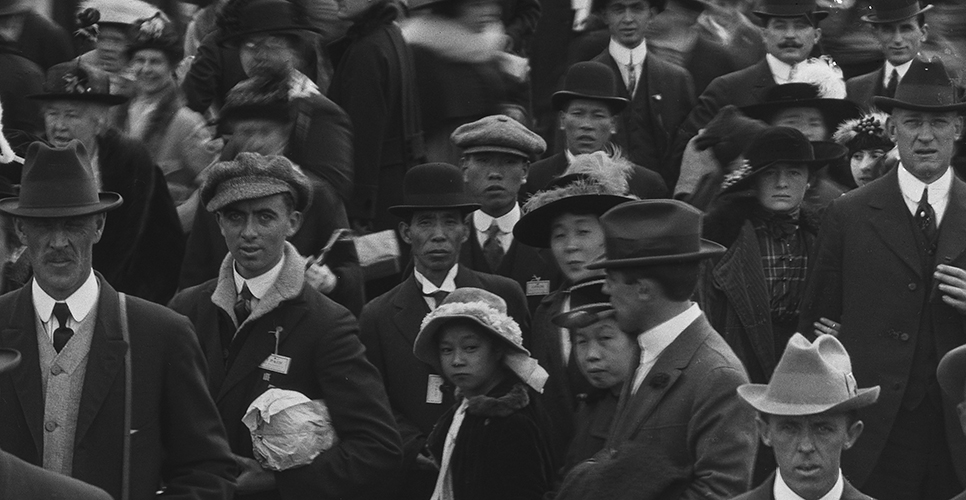
For a “world’s fair” there’s not a lot of diversity in this crowd. But this stylin’ family are holding their own.
###
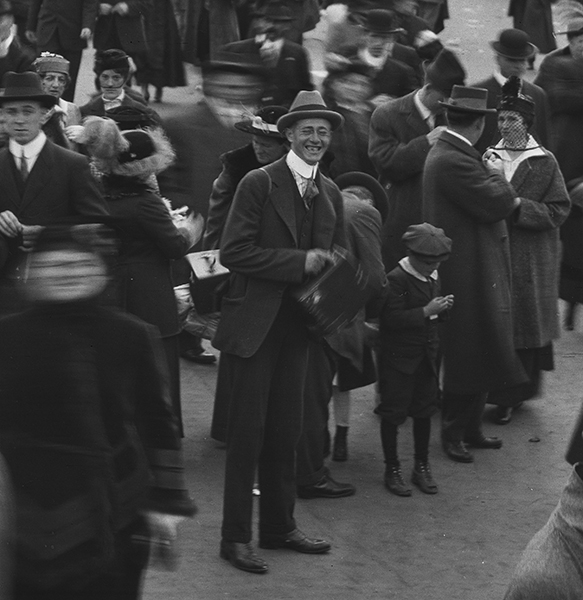
This fellow’s bound to have a good time, and he’s ready to make memories with his handy portable box camera at the ready.
###
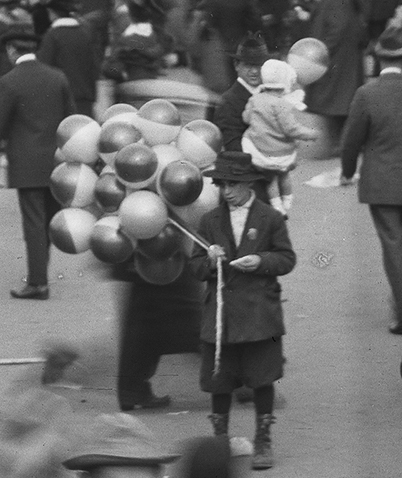
This kid seems to have just made a balloon sale, but it’s serious work.
###
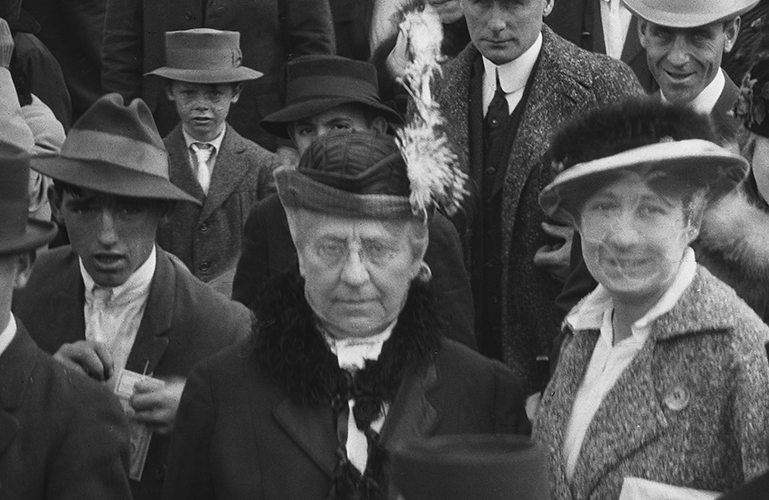
When mixing with hoi polloi, veils and a no-nonsense attitude are necessities for some. Even at a fair.
ESPECIALLY at a fair.
###
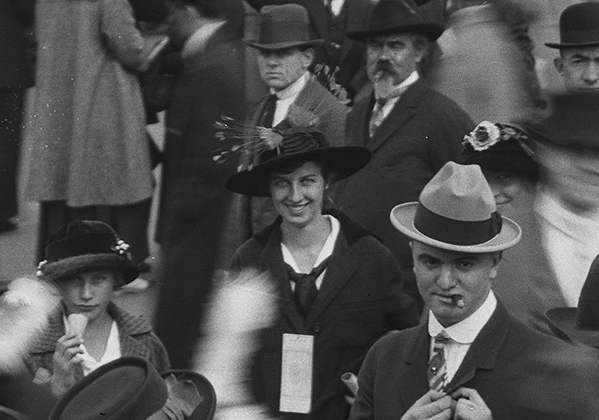
This lady is smiling even though she’s enjoying neither an ice cream nor a cigar. Perhaps she knows her hat is at the cutting edge.
It will be over 40 years before Sputnik challenges her design-forward look.
###
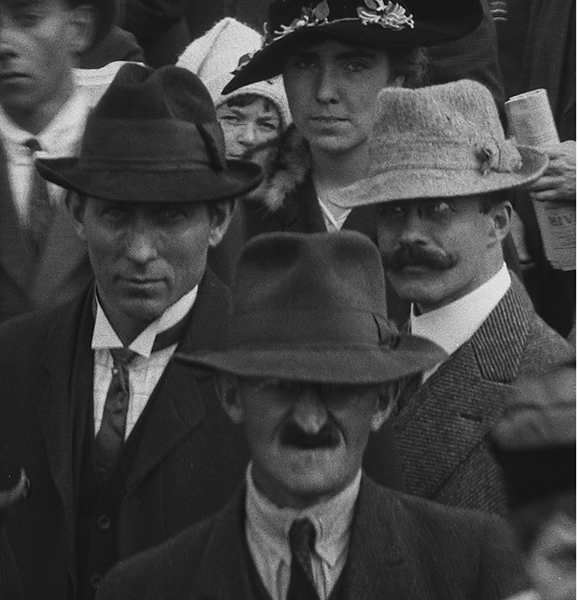
Three distinct kinds of trouble.
Make that four.
###
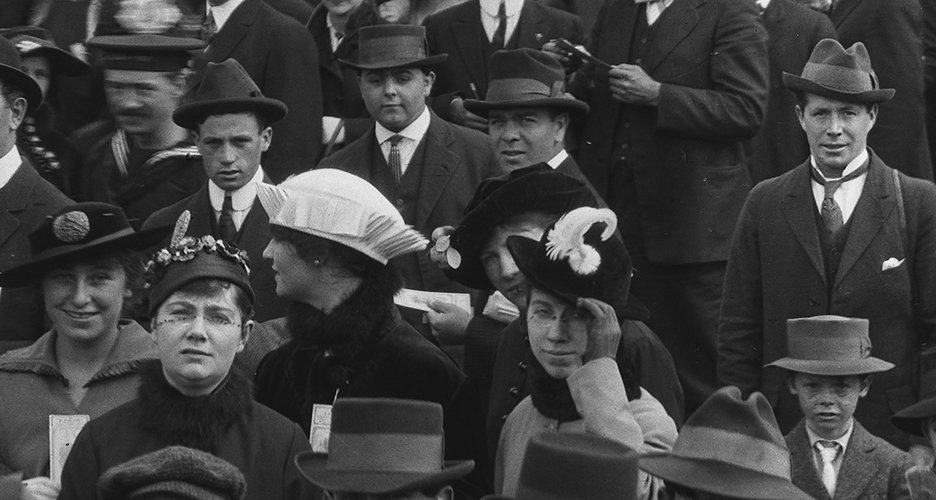
With all the fine hats, how can we choose a winner? – But wait! – Never mind.
The wee chap on the right steals the show!
###
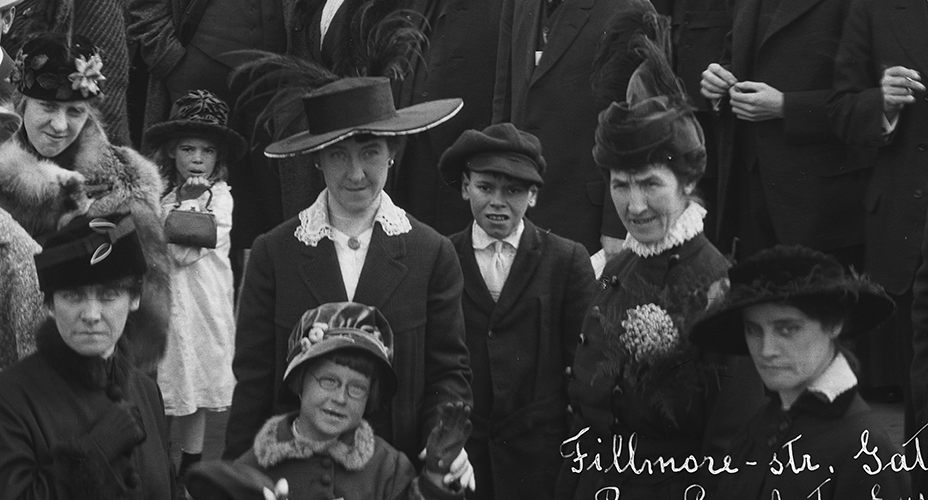
And this favorite auntie’s outstanding chapeau falls victim to another well-accessorized scene-stealer.
###
Work on the Rogers Panama-Pacific International Exposition collection will continue through June of 2018, at which time digital images from over 2,000 negatives will be put online. In the meantime, we will share favorites, along with project updates, on this Bancroft Pictorial Unit blog. Check back again!
James Eason, Archivist for Pictorial Collections, Bancroft Library
